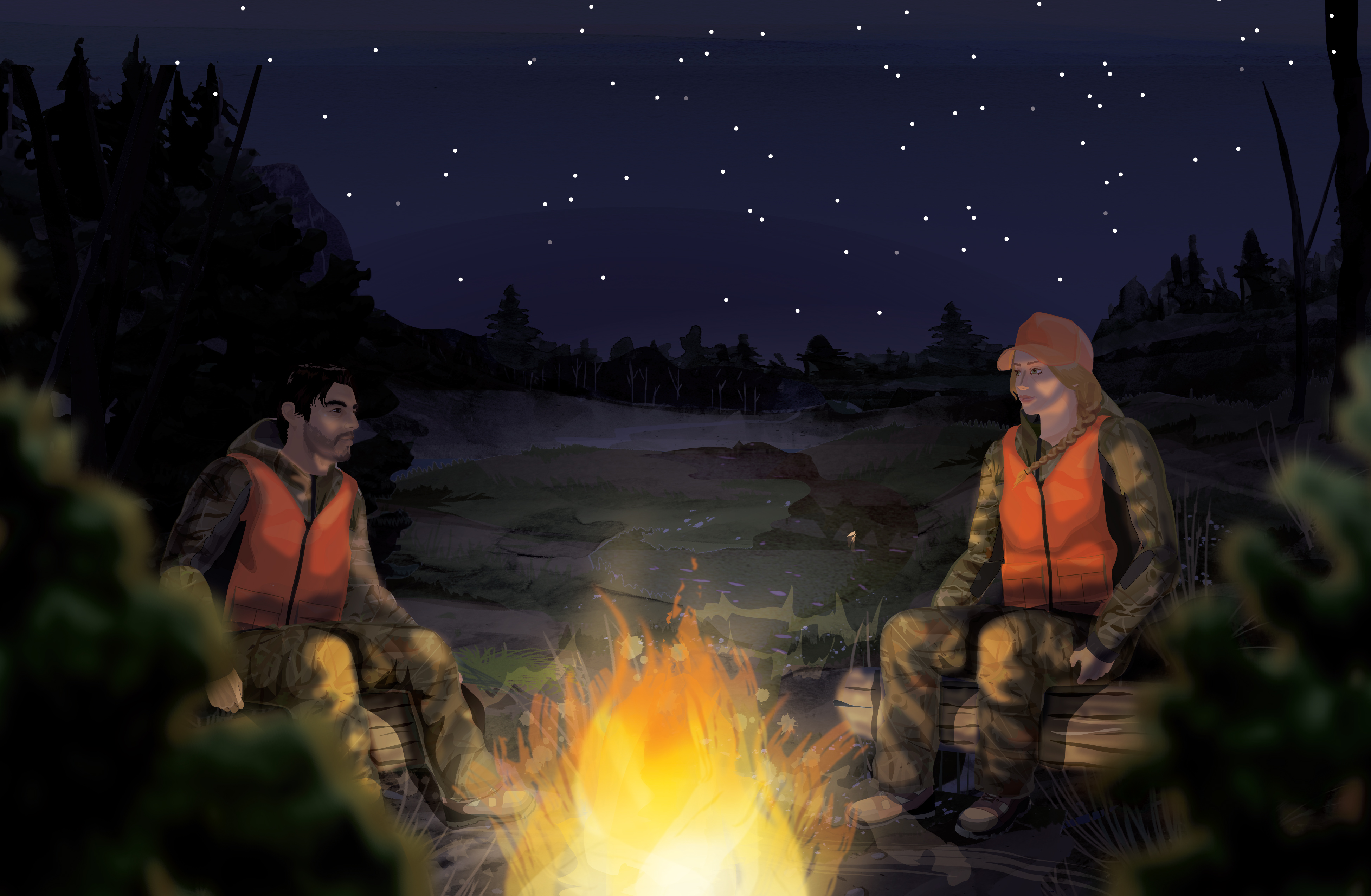HUNTINGsmart! USA Knowledge Base
Module 14 - SURVIVAL
BUILDING A SURVIVAL FIRE


Building a fire in a survival situation is not like building a fire during a camping trip. Well it is, but the pressure is much higher when you don’t have a fire pit, pre-cut firewood and marshmallows to roast. So listen up.
If the day is getting on, build a fire before you get busy thinking about your shelter. You’ll want your fire to be alive and well before sundown to provide you with light, warmth, security and comfort. A fire will also make a great light signal in the dark or smoke signal during the day. So, how do you build a survival fire from scratch? Follow these steps:
Step 1: Find a Fireplace
Pick a good spot to build a fire. You’ll want it to be against a rock, a wall or a pile of logs that will reflect the fire’s heat back toward your shelter. Look for a base of bare dirt or flat rock to avoid causing a brush fire.
If you’re trying to make flames dance on a snow base, you’ve got a little more work to do. You’ll need to create a skid-like platform of rocks or wet logs to place it on. You’ll also need to remember to never build your fire under snow-covered trees because the sparks will melt the snow on the overhanging branches. Dripping water won’t do your fire any favors.
Step 2: Collect Kindling and Dry Wood
A commercial fire starter is going to be your best option for getting a fire to burn quickly—they start easily and they burn white-hot. If you don’t have one in your survival kit, you’ll need to gather any small twigs, wood shavings, bark, dry leaves, grass or paper you can find. These dry materials will be used to create a highly flammable base.
Check This Out: Fluffs and Stuffs
Collect old tissues and dryer fluff—any of that small, flammable stuff that usually gets tossed out. A suit-and-tie-guy may scoff at you for collecting the lint fluffs from your clothing but uh, who’s going to survive the longest in the wilderness? You and your lint ball, that’s who.
Step 3: Assemble Your Fire
Pile your kindling so it looks like a bird’s nest. Then pile the larger pieces of wood in a teepee shape on top of the kindling pile. Can’t find dry wood? Make some by using a knife to scrape off any wet bark off until you hit dry wood underneath. If the wood underneath is greenish in color, move on. The tree is too alive to burn very well. Have a side stash of firewood and kindling ready in case you have an unsuccessful first attempt or in case it burns off faster than you expect it to.
Wise Words: ‘Waste Not, Want Not’
If your collection of burnable material is limited, just build a small fire and tend it carefully so it lasts you through the night. You can always collect more material to burn in the morning but you won’t want to spend the night in the dark.
Step 4: Light It Up
Light the kindling on fire. Whatever source of flame you use—lighter, matches, rock sparks or magic—just be sure to light your kindling from the end where the wind is blowing from—this will help those first flickers of flame spread toward the rest of the kindling and up to the wood above.
Check This Out: Make Black or White Smoke
Black smoke is easier for rescuers to see during the daytime. To burn a black smoke signal, throw any petroleum-based products you can spare on the fire, like oily rags or bits of rubber. Be location-minded though—if you’re surrounded by pine, white smoke will actually stand out better on the dark green foliage. You can produce white smoke by burning wet leaves and branches (any wood will have to be green underneath the bark).



